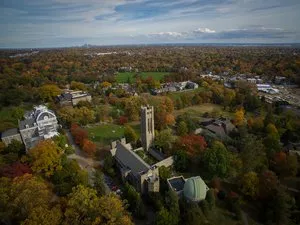Biologist Scott Gilbert Helps Find Key to Four-Chamber Heart Development
Biologist Scott Gilbert Helps Find
Key to Four-Chamber Heart Development
by Alisa Giardinelli
9/08/2009

Howard A. Schneiderman Professor of Biology Scott Gilbert |
Professor of Biology Scott Gilbert studies evolutionary developmental biology. He and his laboratory are trying to understand how changes in embryonic development can cause evolutionary changes in anatomy. His laboratory has focused its work on how the turtle gets its shell, specifically: what changes in gene expression and cell migration cause the turtle to have 59 bones found in no other group of animals?
In much of this work, he has collaborated with Judy Cebra-Thomas, a developmental biologist at Millersville University. Their most recent collaboration is a study - described in the current cover story of Nature - that found the genetic link in the evolution of the heart from three-chambered to four-chambered, illuminating part of the puzzle of how birds and mammals became warm-blooded.
Gilbert is the author of the best-selling textbook Developmental Biology, now in its eighth edition. This year, he also published Ecological Developmental Biology, a well-received new textbook that examines the impact of the environment on normal development. Gilbert wrote this new book with David Epel, a professor at Stanford University, in the hopes of getting developmental biologists to think about how development occurs outside the laboratory. "We're ignoring most of nature," he adds. "This tries to be a corrective to that."
Gilbert joined Swarthmore's faculty in 1980 and teaches developmental genetics, embryology, and the history of biology.



